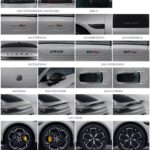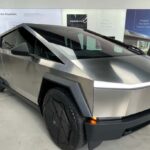|
|
|
Xiaomi has recently unveiled its first electric vehicle, the Xiaomi SU7. The leading Chinese technology group has |
Xiaomi SU7 Resembles Porsche Taycan
In a video posted on Instagram by @kacike80, the Xiaomi SU7 is compared to the Porsche Taycan 4S. The video overlays
images of the two vehicles, highlighting their similar shapes and designs.
According to the video, the Xiaomi SU7, the first electric sedan from the Chinese technology group, closely resembles the luxury
electric sports car from the German automaker.
|
|
|
The Xiaomi SU7 has been compared to the Porsche Taycan. Image: XiaomiUI. |
Xiaomi shared that the SU7’s exterior design is the brainchild of James Qiu, who previously worked on the Mercedes-Benz Vision EQXX
concept. The design also benefited from the expertise of Chris Bangle, former design director at BMW Group.
The Xiaomi SU7 is a collaboration between Xiaomi and BAIC, manufactured in a factory in the Yizhuang development complex in Beijing,
China. It comes in three variants: Standard (29,900 USD), Pro (34,000 USD), and Max (41,500 USD).
The top-of-the-line Max version boasts a CATL battery with a capacity of 101 kWh, offering a maximum range of 800 km on the CLTC cycle.
It features a dual-motor setup, all-wheel drive, and an 800 V electrical architecture. Xiaomi claims the SU7 Max delivers a
combined output of 673 horsepower and a peak torque of 838 Nm.
Xiaomi is not the only company whose designs have drawn comparisons to Porsche. Zeekr, a subsidiary of Chinese automotive giant
Geely, has also been noted for the similarities between its Zeekr 001 model and Porsche vehicles. Interestingly, the Zeekr 001 is
positioned as a luxury electric vehicle, competing directly with the Porsche Taycan and Tesla Model S.
While it is not uncommon for Chinese automakers to draw inspiration from established brands, this trend has diminished in recent
years as Chinese vehicles aim for international appeal and strive for unique designs. However, the initial popularity of the
Xiaomi SU7 suggests that leveraging the familiarity of established brands can still be an effective strategy for gaining
attention.
Huawei’s Approach to Electric Vehicles
Huawei made waves in the automotive industry with the introduction of the Seres SF5 in April 2021, a collaboration between Huawei
and energy company Cyrus. However, Huawei’s role in the design process of the Seres SF5 was minimal.
In reality, the Seres SF5 is simply an upgraded version of the SF5, which was first unveiled in Shanghai, China, in 2019. Huawei’s
involvement was primarily in integrating its Harmony OS and in-car entertainment system into the vehicle.
In September 2022, Huawei introduced the Aito M5, a mid-size electric SUV, at the launch event for its Huawei Mate 50 smartphones.
While Huawei’s CEO, Yu Chengdong, presented the vehicle, the company’s actual contribution was limited to the software and
infotainment system.
Aito, a joint venture between Huawei and Chery, recently announced that they had received over 100,000 orders for their Aito M7 SUV
in just two months since its launch. The Aito M7 features Huawei’s Harmony OS and advanced ADS 2.0 driver assistance system.
More recently, the partnership between Huawei and Chery resulted in the Luxeed S7, a luxury electric sedan positioned to compete
with the Tesla Model S. The Luxeed S7 impresses with its 800 V electrical architecture, enabling it to achieve a range of 430 km
with just a 15-minute charge.
|
|
|
The Luxeed S7 is a luxury electric sedan resulting from the collaboration between Huawei and Chery. Image: Huawei. |
Similar to the Seres SF5 and Aito models, the Luxeed S7 is a product of Huawei’s software expertise combined with a partner’s hardware
capabilities. This strategy has proven relatively successful for Huawei, especially as other Chinese electric vehicle startups
struggle to gain a foothold in the increasingly competitive market.
Mercedes-Benz’s Controversial Electric Vehicle Design
When Mercedes-Benz unveiled its first electric SUV, the EQC, in 2018, it opted for a design that closely resembled its internal
combustion engine vehicles. The EQC even featured a faux grille, which then-CEO Dieter Zetsche defended as essential to maintaining
the brand’s signature look.
|
|
|
The Mercedes-Benz EQC is an electric SUV that retains the traditional grille design. Image: Mercedes-Benz. |
However, with subsequent models like the EQS and EQB, Mercedes transitioned to a more distinctive “egg-shaped” design. This new
direction was met with mixed reactions, with some customers finding it less appealing than the traditional luxury aesthetic of the
brand.
Christoph Starzynski, Vice President of Automotive Technology at Mercedes-Benz, acknowledged that the egg-shaped design was not as
well-received by their core customer base. He shared that the company takes customer feedback seriously and is committed to
incorporating it into their future designs.
Currently, Mercedes-Benz offers a diverse range of electric vehicles, including sedans, SUVs, and MPVs. In the Vietnamese market,
the brand has introduced several electric models, such as the EQS/EQS SUV, EQE SUV, and the seven-seater EQB.
Tesla Cybertruck: A Controversial Design
When Elon Musk unveiled the Tesla Cybertruck in November 2019, its unconventional design immediately sparked conversations. The
angular, futuristic aesthetic of the electric pickup truck divided opinions, despite its impressive aerodynamic performance with a
drag coefficient of 0.335 Cd.
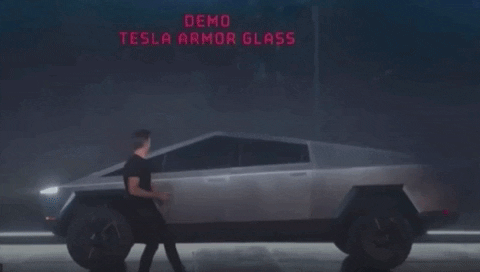
|
|
A demonstration of the Tesla Cybertruck’s bulletproof windows at a launch event in 2019. |
The launch event also included a memorable, albeit unsuccessful, demonstration of the truck’s “bulletproof” windows. After Elon
Musk boasted about the windows’ ability to withstand a 9mm bullet, the lead designer, Franz von Holzhausen, threw a steel ball at
the window, resulting in a visible crack. Musk quickly assured the audience that the window had merely cracked but did not
penetrate, showcasing the truck’s durability.
The production version of the Cybertruck retained its distinctive design, with sharp lines and an imposing presence. However, its
final range figures fell short of Musk’s initial promise of over 800 km, delivering a maximum range of 510 km on the Cyberbeast
version.
The Cybertruck’s robust structure, touted as being as strong as a McLaren P1 supercar, has also raised safety concerns. The
ultra-rigid design may transmit impact forces directly to the occupants in the event of a collision. Additionally, the truck’s
angular design has been criticized as a potential hazard to other road users.
Despite the controversies, Tesla has stood by the Cybertruck’s unique design. With dimensions of 5,885 x 2,030 x 1,791 mm and a
weight of nearly 3.1 tons, the Cybertruck is an imposing presence on the road.
Before the Cybertruck, Tesla had already established a reputation for innovative, if sometimes controversial, designs. Many of their
vehicles have featured unconventional styling, such as the massive central touchscreen and Autopilot technology, which have since
become industry trends.
Beyond the examples mentioned above, the world has witnessed a wave of new electric vehicles from both established automakers and
startups. While some have opted for familiar designs similar to traditional cars, others have embraced bold and distinctive styles.
This evolution in design reflects the dynamic nature of the automotive industry, particularly in the rapidly growing electric
vehicle market.
Recommended Reads for Your Journey
Our Automotive section offers a diverse range of book recommendations to keep you entertained during your travels. Whether you’re
on a long road trip or enjoying a quiet moment, these books are the perfect companions for automotive enthusiasts.
[Quick Review] Audi RS e-tron GT: A Sporty Powerhouse
Continuing its electric SUV series, the e-tron, the Audi brand has taken a significant step forward in the green car market in Vietnam with the introduction of the e-tron GT and RS e-tron GT sedans. This marks the brand’s entry into the electric vehicle competition in the S-shaped land, alongside the Porsche Taycan, Mercedes-Benz EQS, and BMW i7.





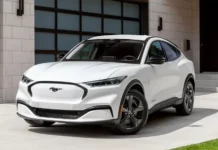
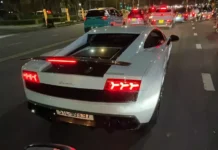
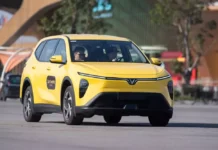
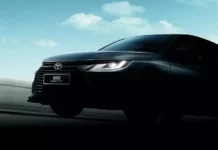















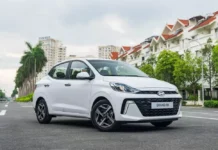
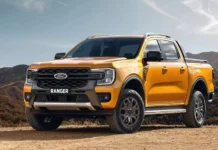
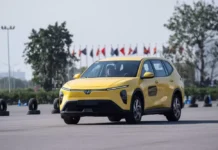
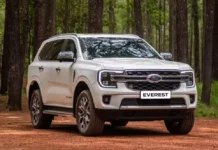

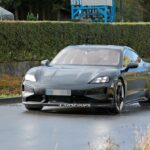
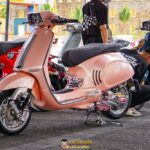
![[Quick Review] Audi RS e-tron GT: A Sporty Powerhouse](https://vnauto.net/wp-content/uploads/2023/11/xehay-audietrongt-08052023-4-150x150.jpg)
